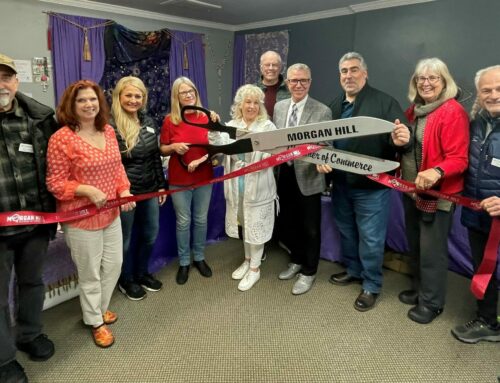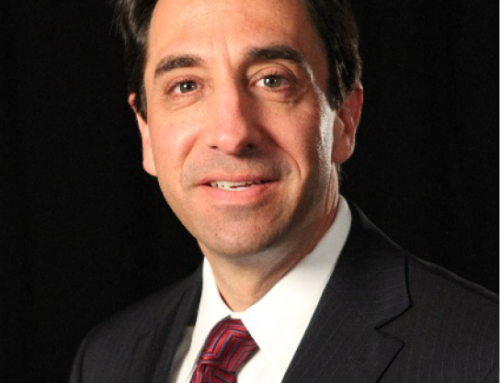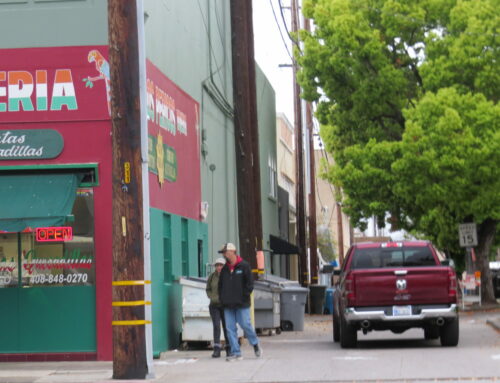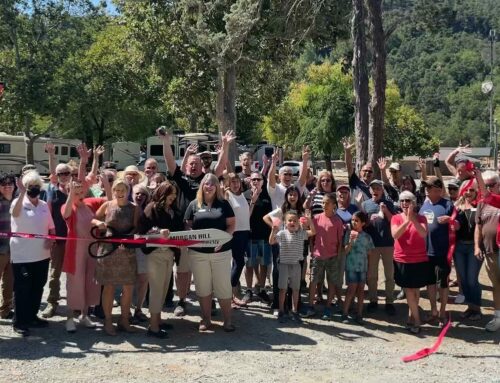Idea of a plaque came from the United States Postal Service issuance of a stamp honoring the 442nd Infantry Regiment
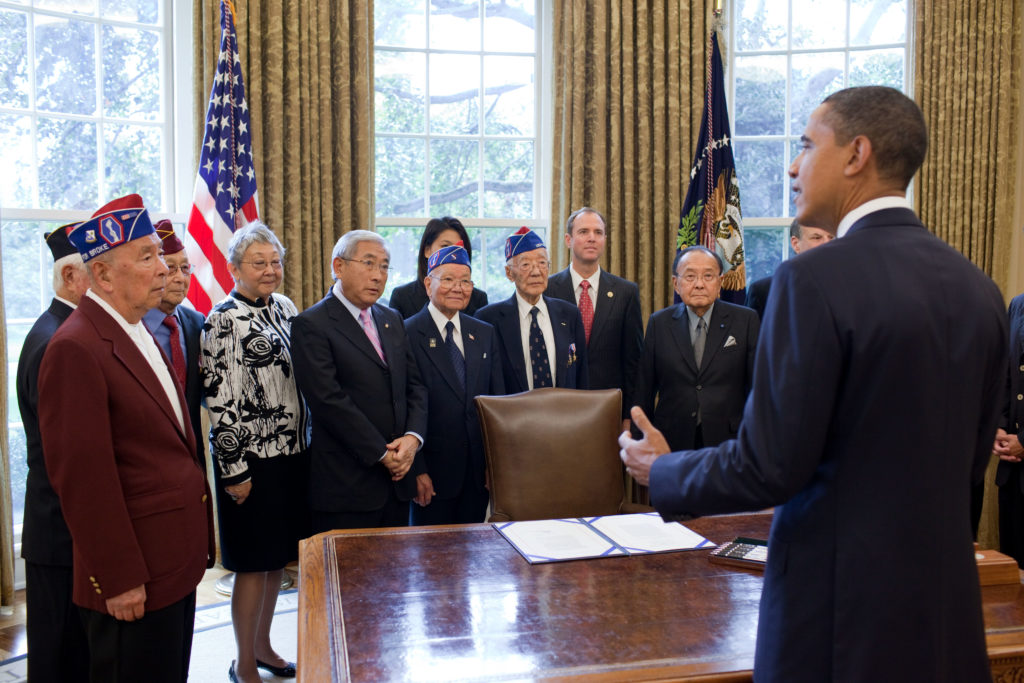
Members of the 442nd Regimental Combat Team receive the Congressional Gold Medal in October 2010 from then-President Barack Obama. Photo courtesy the White House
By Marty Cheek
More than 12,000 Japanese-American men fought fascism in Europe during World War II as soldiers of the famed 442nd Infantry Regiment in the U.S. Army. They marched into combat driven by the motto “Go For Broke!” Many who survived the war found their way to the South Valley region to raise families and build businesses.
To honor the bravery and educate the public of the sacrifice these soldiers made, retired dentist Jon Hatakeyama has initiated a project to install a plaque in Morgan Hill, most likely along the pedestrian/bike trail planned for the Hale Avenue Extension. Other possible sites for this monument to their courage include the Morgan Hill Library and Community Park.
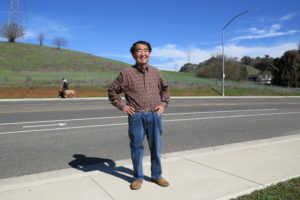
Jon Hatakeyama stands near where a plaque is proposed at the Hale Avenue extension pedestrian trail. Photo by Marty Cheek
The segregated army unit was made up entirely of Americans of Japanese ancestry who were second-generation citizens (called “Nisei”). Many had family in internment camps while they fought abroad.
“The 442nd became the most highly decorated unit of its size in the United States military,” Hatakeyama wrote in a letter dated Dec. 29, 2020, introducing the plaque project to David Gittleson, project engineer with the city of Morgan Hill.
In less than two years of combat the unit earned more than 18,000 awards including 9,486 Purple Hearts, 4,000 Bronze Stars, and 21 Medals of Honor, according to his letter. Congress granted in 2010 the Congressional Gold Medal to the 442nd Regimental Combat Team and associated units.
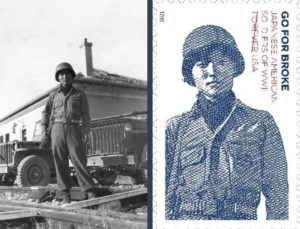
An image of the stamp of a 442nd soldier and the photo it represents.
In 2012, all surviving members were made chevaliers of the French Légion d’Honneur for their actions contributing to the liberation of France and their heroic rescue of the Lost Battalion. Among these 442nd veterans was Lawson Sakai who made his home in Gilroy and built a travel business there. He and his wife, Mineko, moved to Morgan Hill in their later years. Lawson in 2005 founded the Friends and Family of Nisei Veterans, a nonprofit organization with the mission to preserve the legacy of Japanese-American soldiers who served in World War II. He died June 16, 2020, at age 97.
“He fought in all major campaigns and was wounded four times,” Hatakeyama said.
Hatakeyama was first inspired to start the plaque project by news that the United States Postal Service plans to issue a collector stamp honoring the 442nd soldiers. It shows one of the soldiers in uniform with the unit’s motto “Go for broke!” on the side.
 “I just thought since the stamp is coming out, it correlated with Mr. Sakai’s involvement in the 442nd,” he said. “He was always a very humble, likable guy. You would never have thought he fought in a battle with guns. I just thought he and also the other men (who were part of the 442nd) deserved some sort of recognition for the sacrifices they made for their country.”
“I just thought since the stamp is coming out, it correlated with Mr. Sakai’s involvement in the 442nd,” he said. “He was always a very humble, likable guy. You would never have thought he fought in a battle with guns. I just thought he and also the other men (who were part of the 442nd) deserved some sort of recognition for the sacrifices they made for their country.”
An additional purpose of the plaque is to create greater awareness of the role Japanese-American citizens have played in the defense of the nation, he said. This is especially necessary during the pandemic because the COVID-19 crisis has brought a surge of unprovoked violent attacks and vandalism against Americans of Asian ancestry. Rhetoric such as calling the coronavirus “the Chinese flu” and other ethnic references, critics say, has fueled ill will and has led some people to act out against Asian Americans.
 “Maybe this project can take on a different meaning. It could be a way of countering the prejudice of people,” Hatakeyama said. “The plaque can let people know what an outstanding individual Lawson Sakai and other soldiers were as American veterans.”
“Maybe this project can take on a different meaning. It could be a way of countering the prejudice of people,” Hatakeyama said. “The plaque can let people know what an outstanding individual Lawson Sakai and other soldiers were as American veterans.”
Hate crimes against Asians Americans have risen dramatically during the COVID-19 crisis, especially in the Bay Area. (Police Chief Shane Palgrove said no incidents have been reported of hate crimes against Asian Americans in the past 12 months.) Anti-Asian violence is particularly prominent in major cities across the nation, and the attacks in 2021 have been especially numerous in San Francisco and Oakland’s Chinatowns districts.
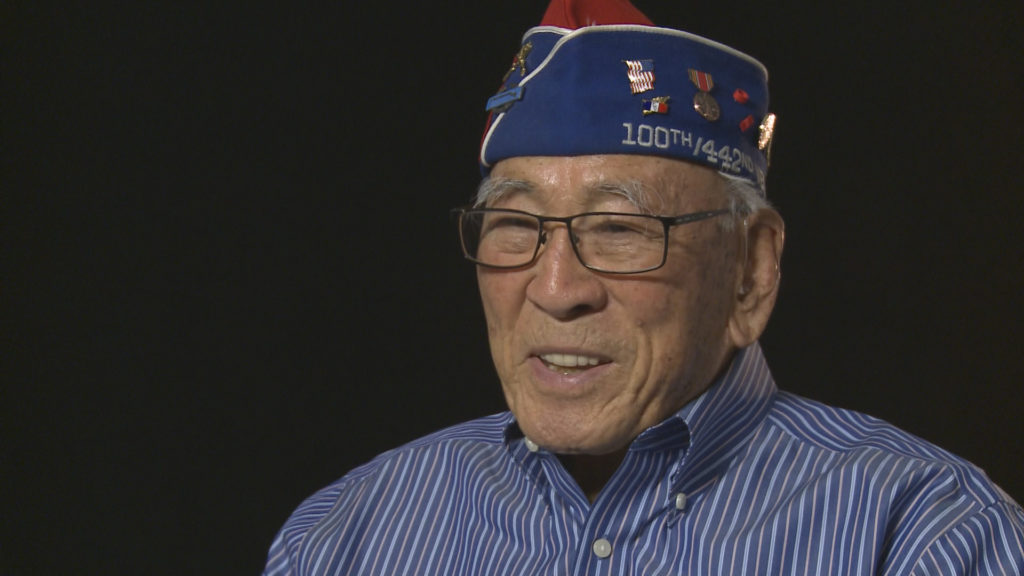
Lawson Sakai
Some experts attribute the rise during the pandemic to xenophobic rhetoric by some political leaders. Not only Chinese Americans but citizens of other Asian ancestry including Japanese, Vietnamese, Korean, Thai, Indian, and Filipino ethnic groups have been victims of hate crime attacks.
Victims especially include elderly Asian Americans. Among reported incidents are an 84-year-old Thai American who was murdered in San Francisco, a 64-year-old Vietnamese American woman who was assaulted in San Jose, and a Filipino American man who was slashed in the face in New York City. A video that can be seen on YouTube shows a 91-year-old Asian American man attacked from behind as he walked down the street in Oakland.
 In an FBI analysis report released in March 2020, federal law enforcement warned of an increase in hate crimes against Asian Americans as the coronavirus crisis grew worse, causing lock-downs and thousands of deaths. Virus experts believe the disease’s origin late in 2019 was the Wuhan region in China.
In an FBI analysis report released in March 2020, federal law enforcement warned of an increase in hate crimes against Asian Americans as the coronavirus crisis grew worse, causing lock-downs and thousands of deaths. Virus experts believe the disease’s origin late in 2019 was the Wuhan region in China.
“The FBI assesses hate crime incidents against Asian Americans likely will surge across the United States, due to the spread of coronavirus disease … endangering Asian American communities,” according to the intelligence report. “The FBI makes this assessment based on the assumption that a portion of the US public will associate COVID-19 with China and Asian American populations.”
Morgan Hill resident Wendy Sullivan, a woman of Chinese heritage, is supportive of the 442nd plaque project after learning about it from an email Hatakeyama sent her. She currently serves as president on the Morgan Hill Unified School District Board of Education and stressed that her support comes as a private citizen and not as an elected official.
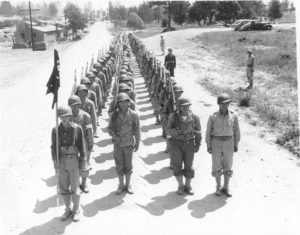
E Company, 2nd Battalion of the 442nd Regimental Combat Team, in formation. Camp Shelby, Mississippi. May 13, 1943. Courtesy of the National Archives and Records Administration.
“As a fellow Asian American, of course I do support a project like this,” she said. “I’m supportive of opportunities to highlight and include more diversity in our community. Although I’ve just recently learned of this project, I feel that any way we can celebrate diversity and include wider representation in our community is healthy because it helps to further educate and hopefully bring people together.”
Sullivan finds it “troubling” that many people in the Asian-American community across the United States have become a target as a result of some people’s fears and frustrations from the COVID-19 crisis.
“I definitely think that when we target a subgroup of our community, it’s not a healthy nor productive way to resolve differences. This innocent community gets victimized,” she said. “It doesn’t necessarily help to heal us, it just further divides society.”
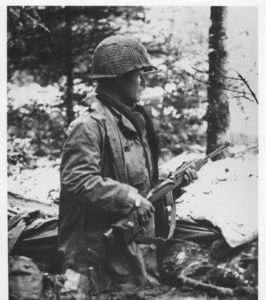
Goichi Suehiro, Co. F, 2nd Battalion, 442ndRCT, in the Vosges area of France. Autumn 1944. Courtesy of the National Archives and Records Administration.
Asian Americans have made significant contributions to the South Valley community as well as California and the United States on many areas from education, the arts, national defense, and government, she said.
“These often get overlooked or forgotten, so I think being able to have a plaque to commemorate the achievement and contributions of Lawson Sakai and other veterans is a nice step forward in terms of recognizing the diversity in our community,” she said.
Chris Ghione, public services director for the city of Morgan Hill, said he was not familiar with the story of the 442nd veterans until he learned about it through Hatakeyama’s proposed project. He sees the plaque as a way to educate more Morgan Hill residents on the sacrifice these men made during World War II.
The Morgan Hill City Council will need to approve the project at an upcoming meeting (most likely 7 p.m. March 17 on Zoom). If it’s approved, work can be started on finding funds to make the plaque and install it. Hatakeyama estimated that the project will cost between $2,000 and $3,000 depending on factors such as the plaque’s size. The location will also need to be decided.


